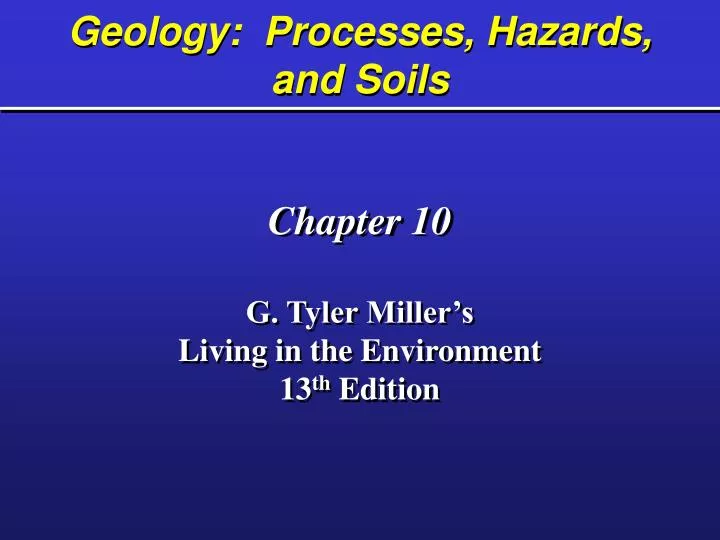
The role of the geoscientist will be more important than ever before in guiding public policy and informed decisions in our ever-shrinking world. The 21st century will see increased environmental conflicts, water shortages, energy resource depletions, land use debates, and globalization that bring these issues close to home wherever they are occurring. Geoscientists are found hiking on active volcanoes, extracting cores on ice sheets and glaciers, measuring streamflow in the middle of a river, and mapping outcrops in rough terrain. They interpret ocean temperatures to predict weather patterns, study soil types to maximize agricultural production, model petroleum reservoirs to guide drilling decisions, and map optimal ore locations for mining operations. They investigate the internal structure of the Earth, reconstruct plate movements through time, decipher rock layers and fossils that indicate different environments, and create models of future climate change. Topics will include carbon biogeochemistry, origin and characteristics of natural organic matter, organic matter in the rock record, molecular biomarkers, evolution of organic compounds in petroleum and contaminated sites, and analytical tools.Geoscientists study processes on Earth and on other planets to better understand our resources and responsibilities within our natural world. GEOG 350 Organic Geochemistry The course will focus on the origin and distribution of organic matter in the environment, and its fate in natural and engineered environments. It includes inductive and deductive evaluation of air photo patterns and the interpretation of multi-spectral imagery and remote sensing imagery. GEOG 323 Remote Sensing Advanced lectures, seminars and laboratories for those specializing in resource and environmental studies. There will be costs related to the field and laboratory exercises in addition to tuition fees for this course.


GEOG 290 Field Methods and Laboratory Analysis An introduction to the principles and practice of navigation, topographic surveying, image analysis, and the sampling and analysis of sediments, water, and plant communities relevant to environmental science. Lastly, the course explores ways to lessen the impacts of natural disasters through risk perception, assessment, and preparedness, and mitigation strategies. Students will explore through case studies the impacts of natural disasters on Canadian landscapes and people. GEOG 235 Earth Processes and Natural Hazards: A Canadian Perspective This interdisciplinary course explores the earth and atmospheric processes that are responsible for landform development and natural hazards, the regions in Canada most susceptible to natural disasters, and current developments in hazard forecasting and monitoring techniques. This is combined with basic surface processes and geomorphology to put the field laboratories in perspective. Topics of discussion will include the origin of elements, stable and radiogenic isotopes, geochronology, thermodynamics, trace element partitioning in mineral fluid systems, weathering and aqueous geochemistry. The Geoscience processes course includes 6 to 8 field laboratories that generally integrate geologic hazards and landforms with the teaching of field mapping skills in interpretation of geologic maps and cross sections. GEOL 229 Introductory Geochemistry An overview of geochemical theory and problem-solving techniques used by Earth Scientists to elucidate Earth system processes. Practicum includes field work, study of rocks, minerals. The Course and Program Catalogue has the complete and official listing of required classes and their descriptions for this program. Earth processes and their effects on the materials, structure, and morphology of the earths crust.

History Matters Indigenous Perspectives on Canadian HistoryĪ Required course for the major b One of the course options to complete the Quantitative Reasoning Requirement c One of the course options to complete the English Language Writing Requirement d One of the course options to complete the Indigenous Learning Requirement

Physics for the Life Sciences or Physics and Technology Introduction to Global Environmental Systems General Chemistry I Structure Bonding and Properties of Materials Here’s what a typical first-year schedule might look like: Course This degree program is flexible and offers you the opportunity to take courses in many different subject areas.


 0 kommentar(er)
0 kommentar(er)
